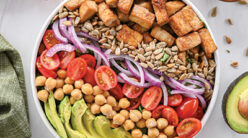 If you’re one of the millions who suffer from migraines, you may want to take a closer look not only at your lifestyle, but also at your diet.
If you’re one of the millions who suffer from migraines, you may want to take a closer look not only at your lifestyle, but also at your diet.
Doctors know that certain foods are likely to trigger migraines, especially in patients who are susceptible to them. A study of headache sufferers found that one-third of participants experienced food-triggered migraines. The most common culprits? Alcoholic drinks, chocolate, and cheese. According to Dr. Fred Freitag, associate professor at the Medical College of Wisconsin in Milwaukee, that number is likely on the low side. More likely, about 40 to 60 percent of migraine sufferers find that foods trigger their headaches.
And that figure doesn’t include the number of people whose migraines are triggered by caffeine, which is a major headache factor. In addition, some people get headaches from food additives, such as the artificial sweetener aspartame and monosodium glutamate (MSG), an amino acid salt used for flavor and preservation.
Foods That Can Make
Your Head Hurt
Caffeine plays a role in many migraine headaches. “Caffeine is far and away the biggest culprit,” says Freitag. “If you drink more than about 200 milligrams of caffeine a day—that’s two cups of coffee—it can start to play a role.”
MSG is another common culprit, and one that you may be unaware of. “MSG is the sneaky one because it’s not always labeled as MSG,” says Freitag. “It might be labeled as ‘natural flavorings’ or things like that, so it’s sometimes a challenging one to find, but it’s a very common player.”
In addition to caffeine and MSG, foods that are rich in an amino acid called tyramine can trigger migraines. Tyramine is a by-product of other amino acids that is often produced during the fermentation process. As a result, you’ll find it in foods such as ripened cheeses, sour cream, cured meats (including sausage, bologna, bacon, pepperoni, salami, hot dogs, and pickled herring), alcoholic beverages (including wine and beer), some nuts, and in soy-based foods such as tofu. In addition, the National Headache Foundations warns that even some fruits and vegetables—including broad beans, lima beans, fava beans, citrus fruits, figs, raisins, papayas, and avocados—can trigger migraines.
What’s the Connection?
Researchers are still studying the connection between foods and migraines, but it appears that substances such as caffeine, MSG, and tyramine have a similar stimulating effect, which causes the blood vessels in the brain to constrict, thus leading to migraines. Doctors theorize that one reason some migraine sufferers are triggered by food is that their bodies lack the enzyme necessary to break down and dispose of tyramine, which means it stays in the body longer and has a more pronounced effect.
Interestingly, it’s when the tyramine leaves the body that a migraine is likely to be triggered—a type of rebound effect. In fact, the time between consuming a certain food and developing a migraine can be as short as a couple of hours or as long as 12 to 24 hours. However, foods that contain headache-causing additives can trigger headaches in a shorter time period—like 30 minutes—as the body responds to the additive itself.
Foods that prevent headaches
Some foods, rather than triggering migraines, seem to play a preventive role. For example, studies suggest that foods rich in magnesium and B vitamins can help prevent migraines. B vitamins appear to help brain cells lessen their sensitivity to outside factors that might trigger migraines, so eating a diet rich in B vitamins can help protect you from migraines, says Freitag. The mineral magnesium also seems to have a protective effect on the brain, especially in women with hormonally-induced migraines. Foods high in B vitamins include leafy green vegetables, whole grains, wheat germ, and beans. Magnesium-rich foods include leafy green vegetables, whole grain cereals, peas, nuts, and legumes.
What You Can Do
If you’re suffering from migraines and suspect food may be the culprit, keep a food and headache diary to determine whether there’s a connection. Pay attention to the combination of foods as well. “People should be aware that sometimes it’s not a single food or a single trigger factor—it could be several things together,” says Freitag.
You may find that simply changing your diet makes a significant difference in the number of migraines you experience. Just make sure you talk to your doctor about any concerns or problems.
Kelly K. James writes about health, fitness, and nutrition from Downers Grove, Illinois.






